Speaker cables: what are they and how to choose?
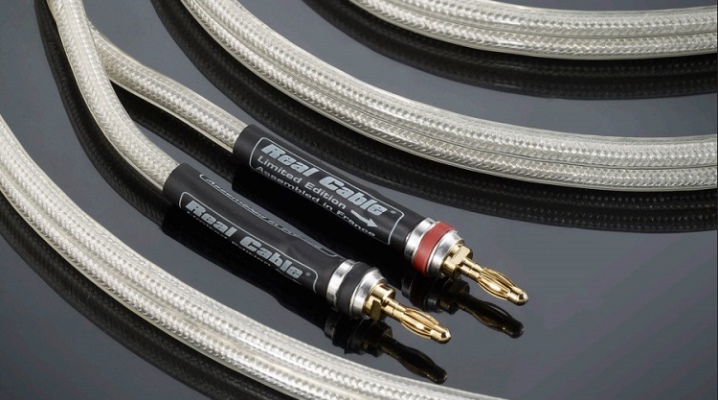
If you are the owner of a modern sound reproduction system that operates from an electrical network, then you probably know that all its components are connected using specially designed wires that have the ability to transmit current. However, not all wires can carry an audio signal. Therefore, so-called speaker cables must be included in the device of audio systems. What they are, how to choose these devices, we will consider later in the article.
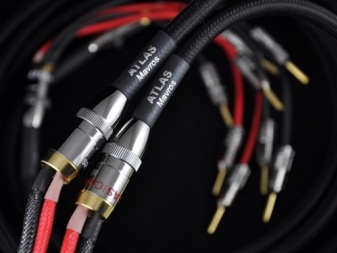
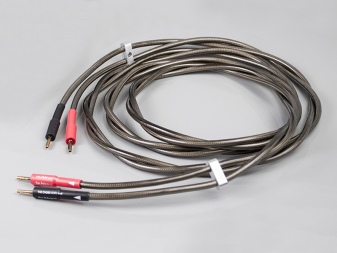
Main characteristics
The speaker cable contains two separate wires (in some cases there may be more). The wires that make up the audio cable for home acoustics systems are absolutely the same in terms of their characteristics, namely: in terms of electrical parameters. In addition, they are covered with a layer of insulation. Speaker cables have a specific laying of natural textile materials and shielding - thanks to this provides a high level of strength and reliability of the structure. Besides, at the same time, the indicator of the distorting electromagnetic effect decreases.
It should be borne in mind that the maximum length, diameter (thin cable or thick), sound quality and some other characteristics of the cable depend on what specific materials the cable was made of. Accordingly, they will differ for each specific product.
In the process of producing acoustic wires, manufacturing companies apply only the latest and most advanced technological and scientific achievements. Thus, the high quality of the signal is maintained and its distortion is reduced.
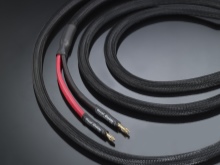
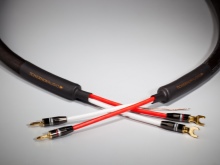
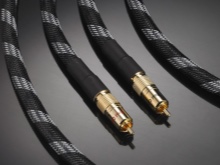
Device and principle of operation
Before purchasing a speaker cable for home use, you need to familiarize yourself with its structure and principle of operation... So, first, let's talk about the internal design of the cable. The conductors of the device are placed in a special insulating layer, which, in turn, is made of polyvinyl chloride. Their cross-sectional index is traditionally in the range of 0.25 mm2.
At the same time, the shell itself is characterized by a high level of elasticity, it is plastic and resistant to the negative influences of the external environment. Depending on the specific type of audio cable, its device can be either single or multi-core. Moreover, products of the second type can have different types of structure.
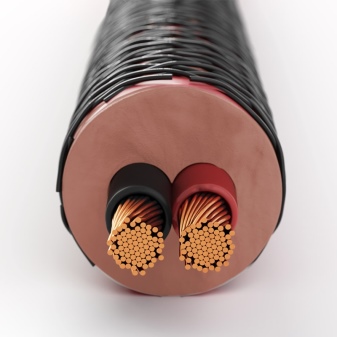
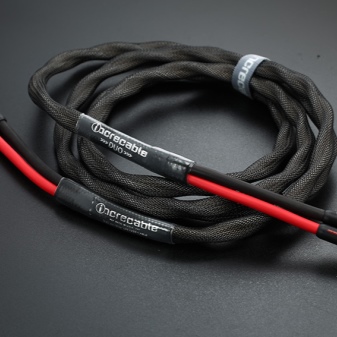
Among them, it is customary to distinguish:
- bundle - one of the rarest types of device, it is influenced by reflected signals;
- concentric - the veins are placed longitudinally and form a circular cross-section;
- rope - This is the most common option due to which the speaker cable retains high levels of flexibility.
In addition to the direct structure of the cable, it is important to familiarize yourself with the principle of its operation. A speaker cable is distinguished by the fact that it delivers a sound signal, for example, to the speakers without any distortion. However, one must understand that this is possible only if only high-quality materials were used for its manufacture, and the production process itself was carried out taking into account all the necessary technologies.
In addition, work can be disrupted by negative external factors: for example, mechanical damage.

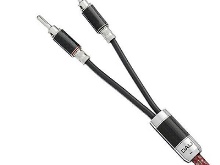

What is different from the usual?
While there are many differences between the two cable products, it is common for beginners to confuse electric and speaker cables. Due to the fact that the main task of the speaker cable is to transfer the signal from the amplifier to the speaker without distortion, it has some distinctive characteristics.
Unlike a conventional cable, the cross-section of the cores of the acoustic cable is smaller, ranging from 2.5 to 4 square meters. mm, and there are more of them - the wire must consist of several (at least two) cores. It is very important that the cable has a suitable shielding system against interference and noise. An important indicator for a speaker cable is its length. In addition, it should be borne in mind that a variety of cable speaker products are much more expensive than conventional electrical cables.
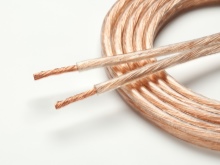
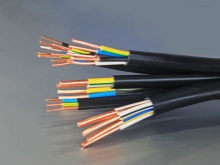
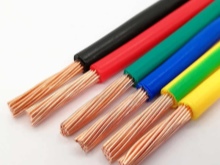
Species overview
A wide variety of speaker cables can be found on the market today (for example, shielded, digital, multicore, interconnect, and many others). Let's consider the most popular ones.
Symmetrical
A balanced audio cable is very often called a microphone cable (since it is used for this very purpose). If we talk about the internal structure, then it should be noted that it consists of two conductors, which in turn are stranded. These conductors are housed in a specially designed conductive shield. The role of such a screen can be copper braid or foil.
As for the central conductors, their function is usually performed by the so-called twisted pair.

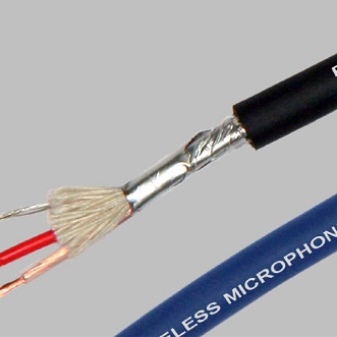
Asymmetrical
The unbalanced version is used to carry analog audio signals. For the most part, such signals typical for household and computer equipment. Unbalanced cables are often used to connect a wide variety of musical instruments. In addition, these types can be used as interconnect cables. With regard to the level of signal distortion, then it depends on the quality level of the screen that covers the center core.
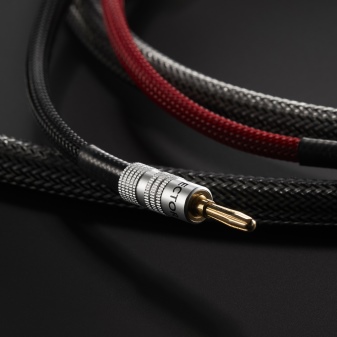

Parallel
The name of this product group speaks for itself. This speaker cable is made from two insulated stranded conductors. In order to increase the level of safety in the use of such a product, some manufacturers create additional uniform insulation.
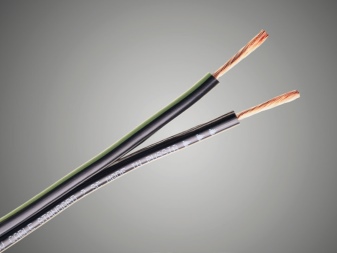
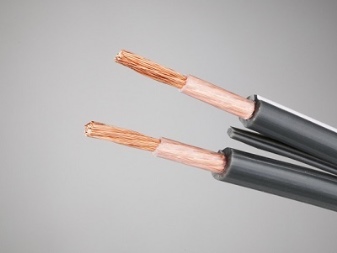
Twisted
Twisted cables are made up of a so-called twisted pair. It means that the insulated conductors that make up the composition are tightly intertwined with each other. This type is most often used to obtain a long connection.
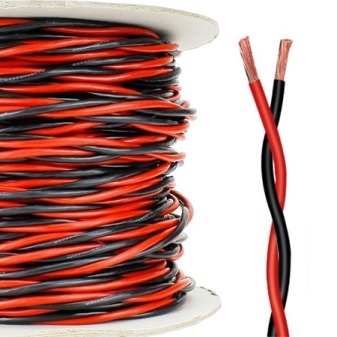
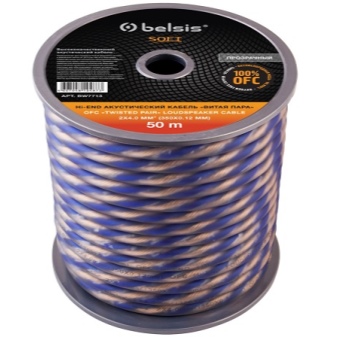
Coaxial
These wires have an increased level of protection against external negative factors, namely: interference. Accordingly, the coaxial view is used in conjunction with the supply wires. The type of speaker cable is the key factor that you should pay special attention to when choosing and buying a product.
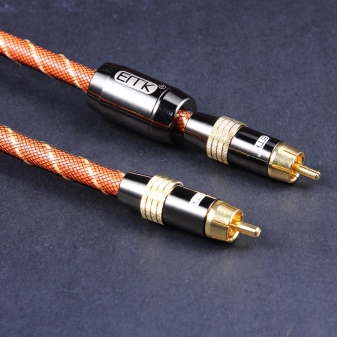
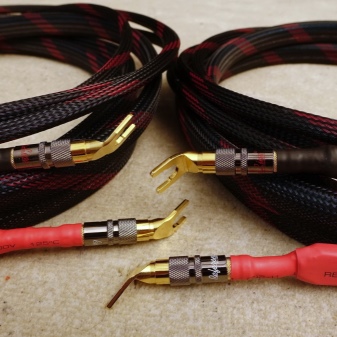
Marking
The marking of the speaker cable indicates the individual characteristics of the product, therefore, it may differ depending on the specific model, as well as on the manufacturer. In this regard, very it is important to pay attention to this factor when choosing and buying speaker cables. So, the first number in the marking indicates the number of high- and mid-frequency amplifier outputs. The second number indicates the presence of a special low-frequency subwoofer. For detailed information on marking, be sure to study the instruction manual and the cable connection diagram. Here you can see the names and symbols of all individual parts and elements.
It is important to pay attention to the labeling of the terminals. Positive terminals are shown in red and negative terminals are highlighted in black. In addition, the positive wire of the speaker cable is marked with a specially designed color stripe.
Thus, marking is essential for the correct selection and subsequent connection of the cable.
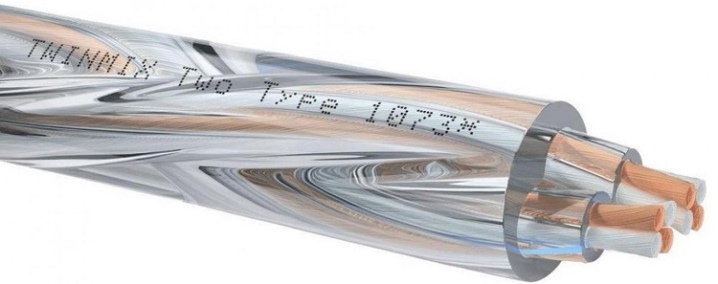
Materials (edit)
Speaker cables can be made from a wide variety of materials. So, on the market you can find silver plated, silver, copper, transparent and many other types of cables. The most commonly used materials for the production of speaker cables are PVC (polyvinyl chloride) and LDPE (low density polyethylene). The first option is most often used for the manufacture of products that are intended for use in conditions of relatively low voltage (no more than 600 volts). The second material is suitable for communication wires, as it has insulating characteristics.
If we talk about cables of higher quality, they are most often made from FEP (Teflon) and PP (polypropylene). Teflon is characterized by high thermal stability. It is known that not only audio cables are made from this material, but also the surfaces of a wide variety of household devices (for example, pans or irons). As for polypropylene, this material is stable and includes a dielectric. The material is quite resistant to negative external factors (for example, vibration).


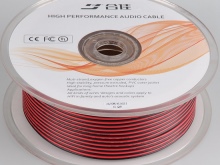
Top brands
Due to the fact that a large number of models of acoustic cables (for example, AUX wires) produced by both foreign and Russian companies are presented on the market today, it is rather difficult for users to navigate in the buying process in such a variety. We bring to your attention a rating of the best and most popular manufacturers.
Oyaide Tunami II SP-Y V2
The market value of this cable is about 45,000 rubles per 2 meters. Copper 102SSC 5.5 mm2 is used as a conductor. For insulation, materials such as polyolefin and polyolefin polymers are used. Connectors are coated with palladium and platinum. This cable provides high quality Soundwall sound.
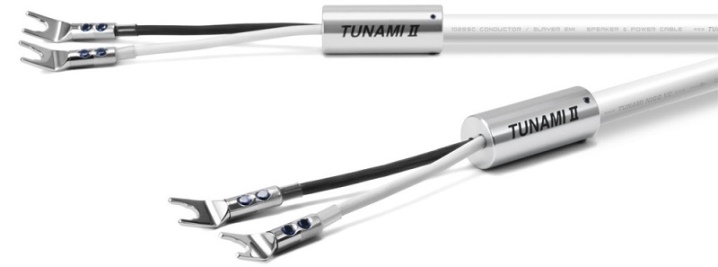
Lavardin Model CHR 317
This cable belongs to a higher price category, but is available to almost all buyers. It costs 60,000 rubles for 3 m. The Lavardin Model CHR 317 uses Low Memory Distortion technology. The positive characteristics of the cable include the ability to operate even with a low-frequency spectrum of sound waves.
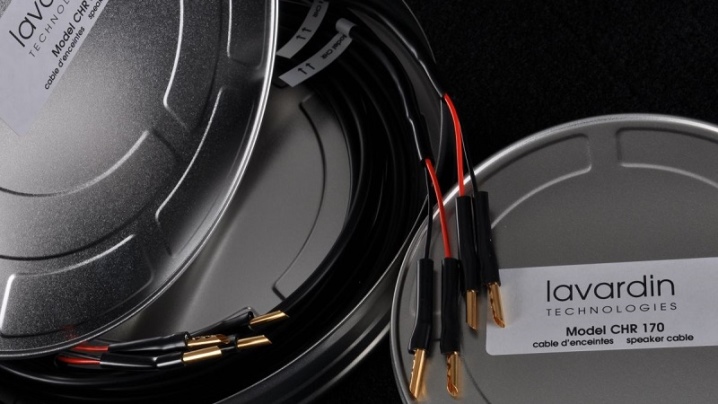
HMS Elektronik Concertato WBT0610
The cable is made of copper and contains several Hf-litz cores (2 x 3 x 2.85 mm2). The dielectric is made of Teflon and the shell is made of polyurethane. The inductance level is 164 nH / m and the capacitance is 466 pF / m. The signal grows rather quickly - in just 11.5 μs. The country of origin of this cable is Germany, respectively, you can count for the highest quality.
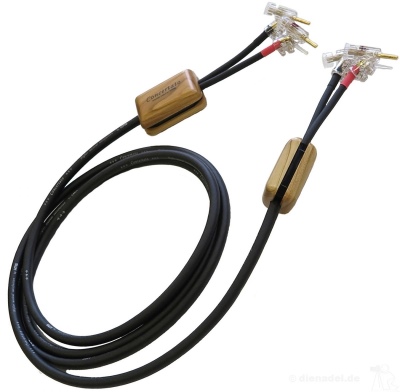
Kubala-Sosna Anticipation
This cable is manufactured in the United States of America. It provides high quality audio reproduction. In addition, the manufacturer may note macrodynamic contrasts. The Kubala-Sosna Anticipation model is great for playing rock music.
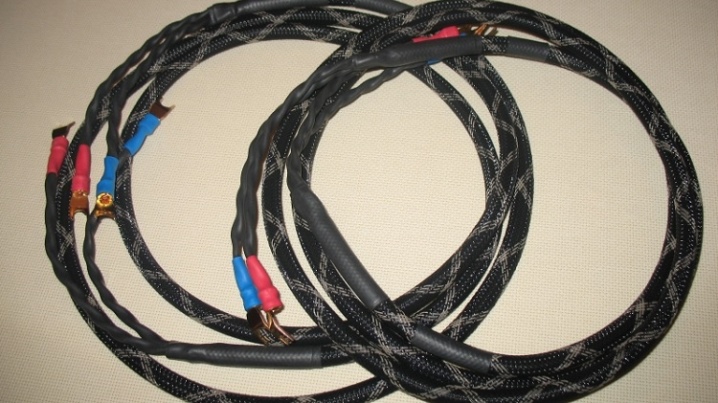
Tellurium Q Blue Diamond Speaker
The cost of the device is relatively high - for 2 meters of cable you will have to pay more than 78,000 rubles. The internal structure of the cable consists of a stranded conductor. This element, in turn, is made from oxygen-free copper. Section size - 2 x 2.5 mm2. The dielectric function is performed by Teflon with the addition of polymer resins. Phase distortion is zero.
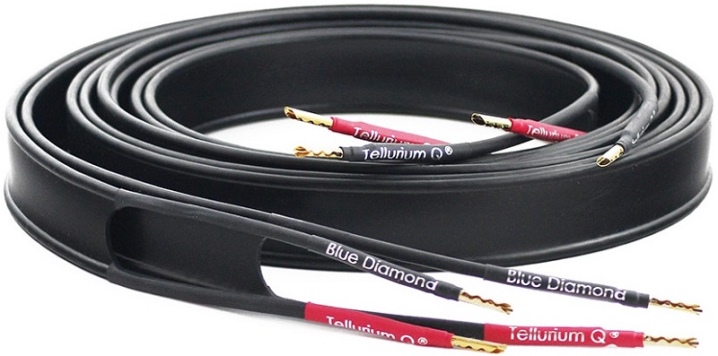
Qed supremus
This stranded cable is created using 99.999% pure silver plated copper. The section size is 10 AWG, 6.2 mm2, and the capacitance is 48 pF / m. The dielectric is a ceramic material, such as enamel with foamed polyurethane were used in the process of its manufacture.
The manufacturer guarantees users a clear and high-quality sound.
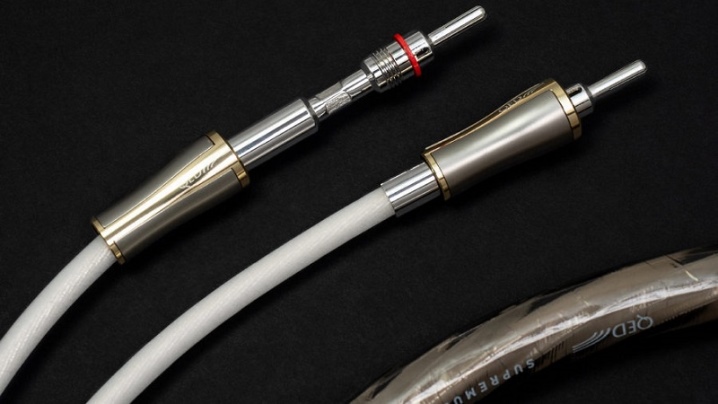
Chord Company Epic Reference Speaker
This speaker cable model is one of the most expensive in our rating. The cost of 3 meters of wire is more than 95,000 rubles. In this case, the manufacturer used 4x12 AWG silver-plated copper as a conductor, and PTFE Teflon plays the role of a dielectric.
Thanks to a wide variety of manufacturers and models of audio cables, everyone will be able to choose the option for themselves that will meet their individual needs.
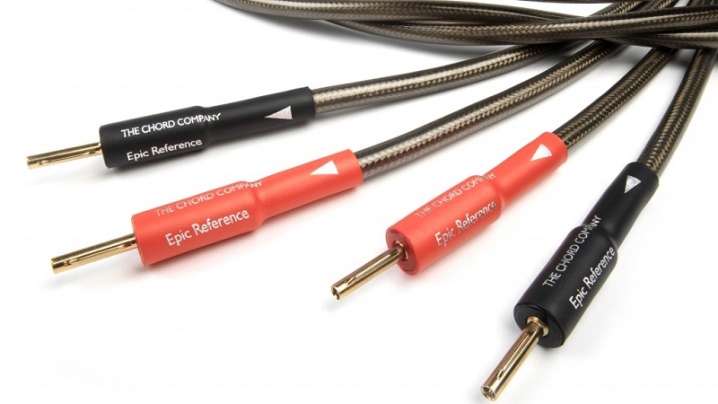
How to choose?
Choosing a speaker cable for connecting speakers, for a monitor, for Hi-Fi or Hi-End systems, for an audio system and other devices is a very difficult and responsible task. You need to choose an accessory taking into account the key characteristics. Let's consider the main ones.
- Price. Despite the fact that each of us wants to save a budget, you should not give preference to the cheapest options. The calculation of the price should be made taking into account its correlation with quality. In addition, too low a cost should raise suspicions - most likely, you are being offered a fake or low-quality product.
- Manufacturing material. The features of the materials from which audio cables are made were discussed above. Choose the most reliable options.
- Manufacturer. There is no consensus on this characteristic of speaker cables. So, often users recommend giving preference only to those wires that are made by well-known and proven brands. In this case, you can be sure that the products are manufactured in accordance with all international standards and regulations. On the other hand, there is an opinion that indicates that the high cost of branded cables is justified not only by their quality, but also by the popularity of the brand. One way or another, but the choice is yours.
- Length... The length of the speaker cable will be individual for each user. You should measure the distance between the speaker and amplifier beforehand. However, do not buy the cable end-to-end, there must be a small margin of length.
- Appearance... The speaker cable is sold in a wide variety of colors. Choose colors that suit your specific purpose and your individual taste preferences. It is important that the cable is invisible, so choose the product in accordance with the interior design of your room.
- Salesman. In order to buy a high-quality speaker cable, you need to contact only trusted and conscientious sellers. Purchase goods only in company stores and official dealerships. Thus, you will buy a cable that will meet all international standards. If you ignore this recommendation, then you can buy low-quality or fake goods from scammers. Be extremely careful.
In addition, you should take into account the table of cross-sections for power, the presence of a volume control and a standard kit.
If, when buying a cable, you take into account all the factors that were described above, then you will make a good purchase, which will fully fulfill all its functions and will bring you only positive emotions.
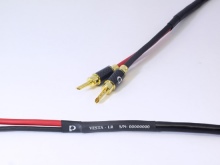


Operating rules
Once you have selected and purchased a speaker cable for your personal use, it is very important to familiarize yourself with the rules and principles of its operation... So, before connecting the wire, it is important to visually verify its integrity: carefully inspect the connector, connectors, terminals and other parts.
In addition, manufacturers offer users to follow simple rules during cable operation:
- it is forbidden to twist, squeeze or bend the cable;
- the location of the wire should not be parallel to the location of the network wires (the same applies to any devices or structures that include ferritic materials);
- the ends of the cable must be completely covered;
- it is strictly forbidden to combine positive and negative conductors (if this advice is disregarded, a short circuit may occur);
- unused cables must be completely disconnected;
- do not combine speaker cables with each other;
- in order to prevent oxidation processes, the contacts should be regularly cleaned;
- do not use too long wires.
If you strictly follow all the given advice and recommendations of specialists, you will be able to maximize the life of the cable.
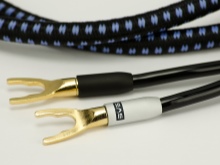
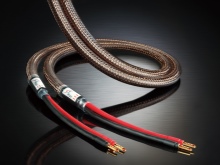
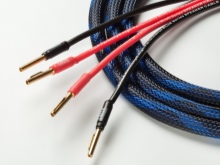
For information on how to choose the right speaker cable, see the next video.













The comment was sent successfully.